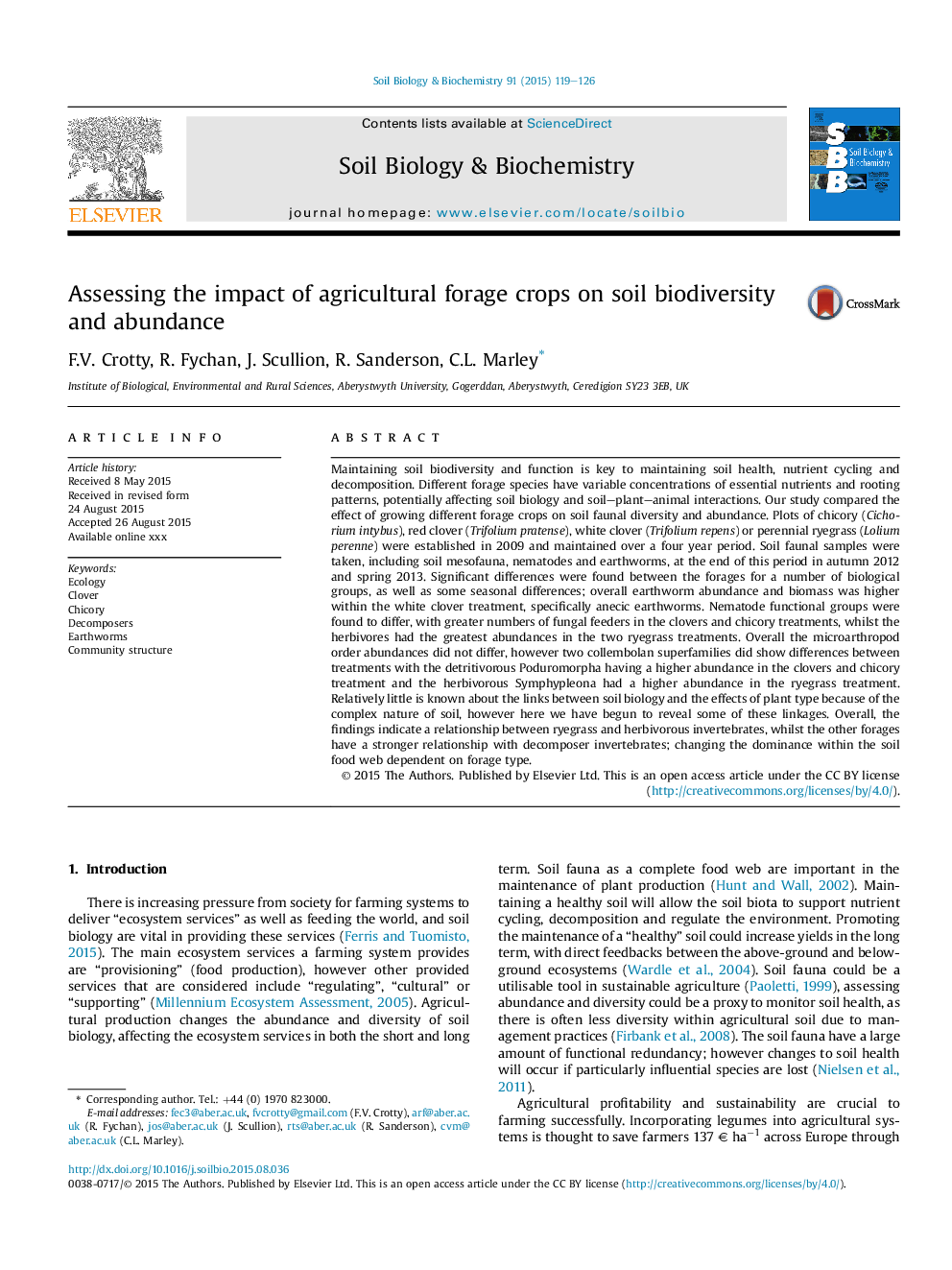| Article ID | Journal | Published Year | Pages | File Type |
|---|---|---|---|---|
| 8363779 | Soil Biology and Biochemistry | 2015 | 8 Pages |
Abstract
Maintaining soil biodiversity and function is key to maintaining soil health, nutrient cycling and decomposition. Different forage species have variable concentrations of essential nutrients and rooting patterns, potentially affecting soil biology and soil-plant-animal interactions. Our study compared the effect of growing different forage crops on soil faunal diversity and abundance. Plots of chicory (Cichorium intybus), red clover (Trifolium pratense), white clover (Trifolium repens) or perennial ryegrass (Lolium perenne) were established in 2009 and maintained over a four year period. Soil faunal samples were taken, including soil mesofauna, nematodes and earthworms, at the end of this period in autumn 2012 and spring 2013. Significant differences were found between the forages for a number of biological groups, as well as some seasonal differences; overall earthworm abundance and biomass was higher within the white clover treatment, specifically anecic earthworms. Nematode functional groups were found to differ, with greater numbers of fungal feeders in the clovers and chicory treatments, whilst the herbivores had the greatest abundances in the two ryegrass treatments. Overall the microarthropod order abundances did not differ, however two collembolan superfamilies did show differences between treatments with the detritivorous Poduromorpha having a higher abundance in the clovers and chicory treatment and the herbivorous Symphypleona had a higher abundance in the ryegrass treatment. Relatively little is known about the links between soil biology and the effects of plant type because of the complex nature of soil, however here we have begun to reveal some of these linkages. Overall, the findings indicate a relationship between ryegrass and herbivorous invertebrates, whilst the other forages have a stronger relationship with decomposer invertebrates; changing the dominance within the soil food web dependent on forage type.
Related Topics
Life Sciences
Agricultural and Biological Sciences
Soil Science
Authors
F.V. Crotty, R. Fychan, J. Scullion, R. Sanderson, C.L. Marley,
